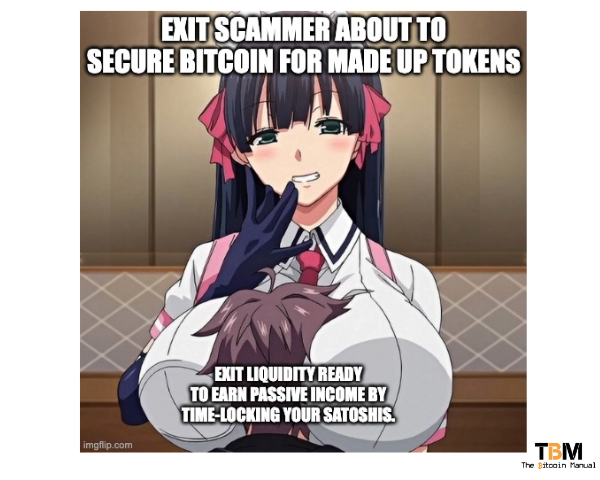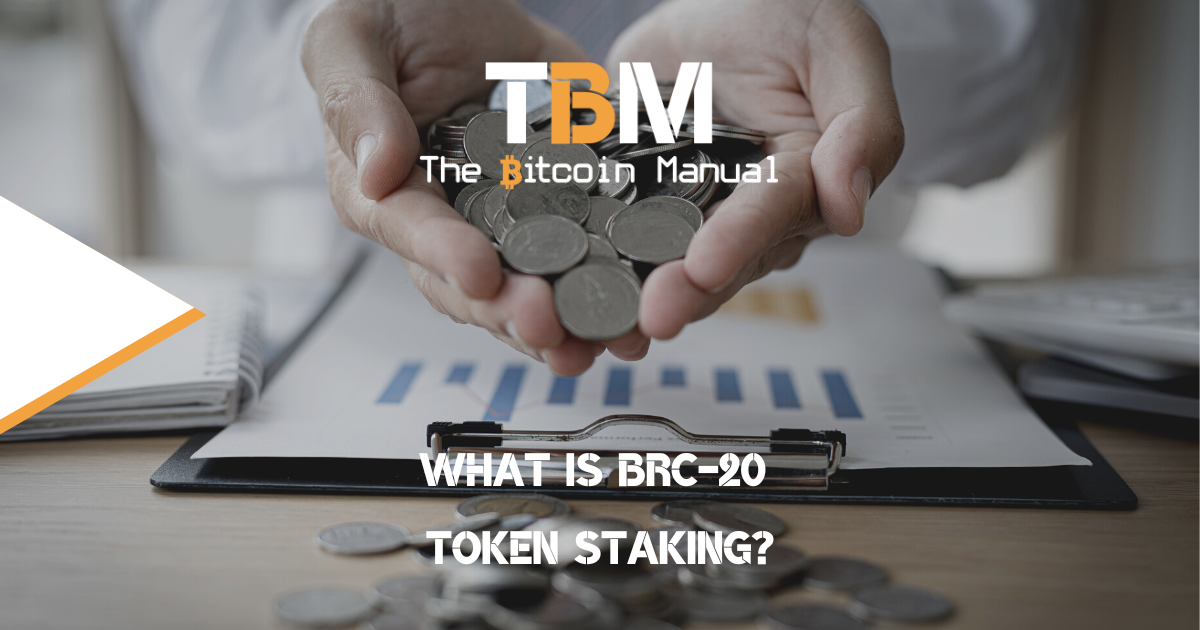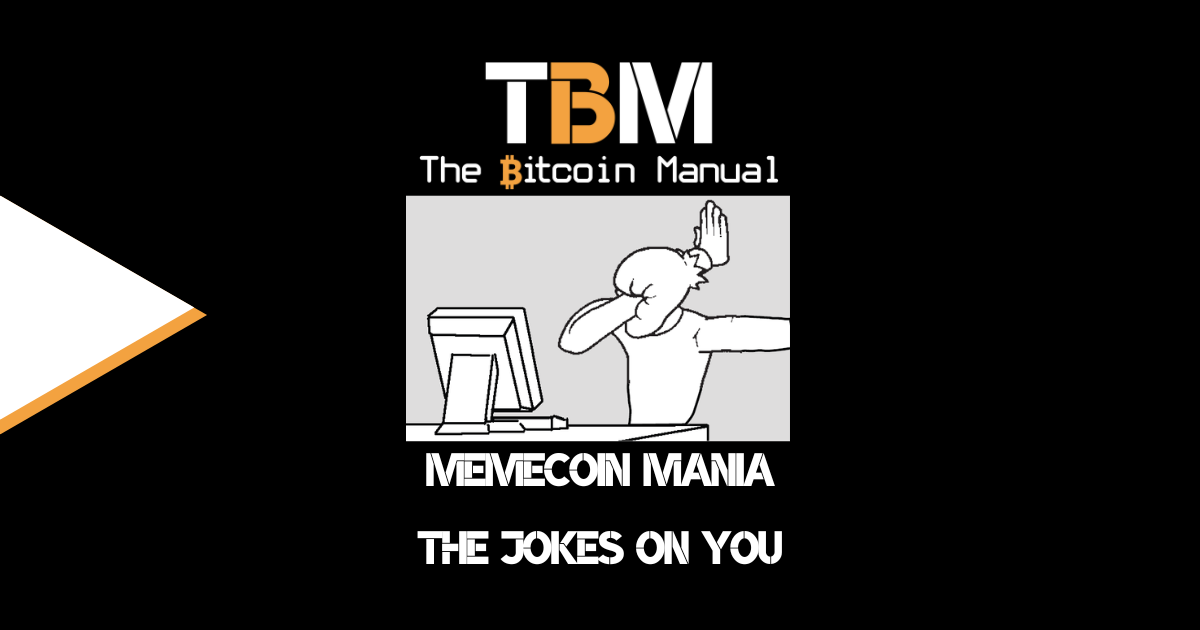I recently provided a breakdown of how the BRC-20 economy is meant to function, and if you’ve read it, you know it’s doomed to end in tears for many. Early minters who are lucky will make out like bandits, while the majority will be left with the reality they paid $100 in fees and even more in trading to move 200 satoshis into a Bitcoin wallet. As the non-stop creation of new coins drowns out what little liquidity remains, it makes it harder for those looking to dump on retail to find buyers for their worthless inscribed satoshis.
So what do you do if you run out of speculators willing to take a chance on buying your hot potato and trying to flip it while the token still has some relevancy in degen culture?
As an exit scammer or pump and dumper, your goal is to secure as much capital as possible for your made-up token and selling it all in one go is not always the best strategy. It could burn your social capital, which you might need later, to launch a new token and repeat the process.
As a token issuer, your entire goal is to talk your book and get people to believe the hype and hand you real Bitcoin while they receive far less Bitcoin but with an inscription and a promise that these satoshis are worth a lot of money or will be one day. If you paid a lot for it, surely someone else will do the same, right?
There’s a sucker born every minute, but suckers do get exponentially harder to reach with time as other scammers are competing for their attention and money.
If you can’t drum up enough excitement to break through the noise, you might end up sitting with a bunch of inscribed satoshis that you made way too much in miners’ fees for, and now you can’t realise a return; that sucks.
As a token issuer, you’re constantly thinking of ways to keep the buy wall going until you’ve successfully exited. One way is through narratives, and the other is?
You offer them the ability to earn a yield, of course, feed into their notion of greed so that you can
Like any other crypto grift, it has to evolve constantly, have some road map, and some new killer feature to maintain relevancy and bring in more users. Since BRC-20 tokens are seen as a fresh start for tokens, all the ideas that failed in the altcoin market are going to be reproduced to try and reduce selling pressure.
When thinking of a way to force high-time preference traders to take a low-time preference stance, you’re going to need to offer up an incentive and what is more attractive to people today than the promise of wealth without work.
One term that often comes up and summarises this idea perfectly is “staking”. While it has become a popular way to “earn passive income”, it’s not without its controversies.
What is staking?
In cryptocurrency terms, staking involves locking up a cryptocurrency in a digital wallet to support your own validator or a 3rd party validator that, in turn, provides resources for the blockchain network’s operations.
These operations include validating transactions and maintaining security; these validators perform the actions that miners would in the Bitcoin network under the proof of work consensus. Instead of committing electricity and machines to provide the backing of the network, POS networks use capital in the form of their native token.
In Proof of Stake (PoS) and it’s variant consensus mechanisms, users stake their coins to become eligible to be chosen as the next block validator. Participants often receive additional coins as a reward (interest rate/yield) for staking their coins and contributing to the network’s security.
This yield is paid to the validators as part of the fees and block reward and then redistributed to the stakers backing that validator. The reward is added to a stakers balance based on each portion of the coins backing that validator.
How does staking work?
The staking process varies depending on the specific PoS mechanism used; it could be POS or a PoS-variant protocol like DPOS. However, the general concept involves users locking up a certain amount of their cryptocurrency in a network wallet. These staked coins are used as collateral and an incentive for the staker to validate transactions honestly.
The chance of being chosen to validate transactions typically depends on the number of coins staked. The more coins you stake, the higher your chances of being selected as a validator. The incentive in staking is not to compete with one another but rather to scale through coalescence around a specific validator who will take on all the operational risk.
The validator that secures the most capital often wins the most rewards, thus able to pay out a better and more consistent yield, and continues to attract more stakers to its pool.
Why is staking considered risky?
While staking is seen as a legitimate practice and an alternative to proof of work by blockchain networks, some critics label it as a scam due to several reasons.
For one, staking can create a barrier to entry where only those with substantial holdings can realistically expect to be chosen as validators. This “rich-get-richer” scheme can lead to centralisation, contradicting the decentralised ethos of cryptocurrencies.
Second, staking can be complicated. You need to understand how staking works and the risks involved before you start staking, and many are priced out of becoming validators due to its requirements, so very few even bother to participate.
Some projects may offer exceptionally high staking rewards as a way to entice people to buy and stake their coin, only for the project’s creators to disappear or the coin’s value to crash. These “staking scams” can be difficult to spot, especially for newcomers to the crypto space.
Staking is not a free ride; there is no risk-free rate, no passive income opportunity, just another way to hide the game of musical chairs, that is, token trading.
How do BRC-20 tokens approach scamming? I mean, staking.
BRC-20 tokens have generated a lot of excitement, but excitement can only keep a grift going for so long; eventually, traders want to sell and realise some profits. To ensure you have less competition when selling to buyers, staking is a great way to encourage a cohort to delay their potential sell orders and even buy more, with the hope of securing a yield while they wait.
The idea here is that if you mint or purchase a BRC-20 token, you can stake it, earn more of that token based on the duration of your lock-up period and the issuance rate and then your total balance will be worth even more when you sell it.
The reality, however, is unsuspecting traders will be buying or minting BRC-20 tokens, paying an additional fee to stake it, and falling for the sunk cost fallacy. Since you’ve spent X amount on buying/minting and staking, you’re encouraged to wait until you’ve hit a positive return.
While you wait, token issuers and early minters have free reign to sell their inscribed satoshis at the mark rate and realise a return.
The idea of staking on BRC-20 makes very little sense when the appeal was that anyone could participate in minting a fixed supply of tokens. Now you want to create additional inflation on what was meant to be a fixed supply?
Wouldn’t staking be more applicable to the ORC-20 token standard, which should have an inflationary soft cap instead? Honestly, everyone in this space is just making it up as they go along and throwing way too much money at shoddy, half-baked ideas.

How does BRC-20 token staking work?
Unlike altcoin chains, the Bitcoin blockchain was never created with the intention of having tokens running on top of it. As part of its consensus protocol, Bitcoin cannot perform transactions with non-native assets.
Since Bitcoin doesn’t have on-chain Turing complete smart contracts that can run scripts to perform specific actions validated by the blockchain, developers are merely trying to mimic the end result by requesting users pay mining fees to update the status of the inscribed JSON file.
Since there are no smart contracts in the BRC-20 ecosystem, the idea is to use a 3rd party (oh, how very decentralised) as a “staking address”, where users can transfer tokens and get them back (with rewards) by doing transfer calls, this process is being dubbed the BitStake protocol.
This is ultimately just another field in the JSON file that stipulates yield rates thumb sucked out of the air.
{
"p":"brc-20",
"op":"deploy",
"tick":"bYLD",
"max":"10000000",
"lim":"10000",
"yield": {"6000": "0.0007","8000": "0.0002", "1000000":"0.00002"}
}- To stake tokens, users would broadcast the usual transfer will update. Inscribe and send inscription to STAKING address.
- To unstake tokens, a user would inscribe “untransfer” from the same address and send it to STAKING address.
| Key | Required? | Description |
|---|---|---|
| p | Yes | Protocol: Helps other systems identify and process BRC-20 events |
| op | Yes | Operation: Type of event (Deploy, Mint, Transfer, Untransfer) |
| tick | Yes | Ticker: 4-letter identifier of the BRC-20 |
| max | Yes | Max represents the maximum mintable supply. NOTE: The total supply (max supply + staking rewards) will be inflationary, just like any staking token on any chain. |
| lim | No | Mint limit: If letting users mint to themselves, limit per inscriptionNextStaking & Unstaking of BRC-20 tokens |
| dec | No | Decimals: set decimal precision, default to 18 |
| deploy | No | Nested JSON object specifying the yield rates for first x blocks, then y blocks etc. If this key is mentioned, it means stalking is allowed for the ticker. |
Stakers must consider the fees paid for staking and unstacking when basing how large a position to take and how long to hold the tokens. As I mentioned earlier, the sunk cost fallacy combined with the cost of staking encourages longer hold-up periods and larger buy orders, making it the ideal incentive to drive exit liquidity for your meme coin.
Another obvious issue is that you’re handing over coins to an address and committing that transaction on-chain; that address does not need to honour the command in the JSON file, making this method of staking ideal for an old-fashioned rug pull.
Websites can be hacked, or users could be sold on incorrect staking addresses, and I suspect this will be the case, and plenty will be scammed out of their satoshis and inscribed tokens.
Luckily, the tokens are worthless, so it shouldn’t be a big loss.
There is an option to time lock your Bitcoin on the blockchain using the OP_CODE CheckLockTimeVerify and setting a block height to unlock, which could be a better option for this staking protocol, and ensures that you retain the satoshis in your wallet and just provide the staking service with an on-chain proof but hey, this is doomed to fail anyway, why try to create a serious implementation?
Stake out before you get taken out.
Aside from the potential for scams, there are several other reasons to be cautious about staking coins.
Staking requires users to lock up their funds for a certain period. During this time, the staked coins cannot be sold or traded, reducing liquidity and exposing the holder to potential price drops. While you’re staking, hoping that the new token issuance coming your way can be sold at a profit, the person who sold you those staking coins has realised their return, you’re buying their risk, and more often than not, you aren’t sufficiently compensated.
Staking returns are rarely guaranteed. They depend on several factors, including the total amount of coins staked in the network and the coin’s price. If a coin’s price drops significantly, the staking rewards may not cover the losses incurred.
Additionally, staking in a network means you are investing in the success and security of that network or token. If anything happens, you’re powerless to react when you’re stuck in a lock-up phase. If the network suffers an attack or loses credibility, the value of your staked coins can plummet.
You were warned.
Again I am only giving you the facts as I see them; if you feel that this is not sufficient enough for you to avoid taking these risks and the potential payoff will be worth it, go right ahead. Bid up block space trying to chase yield that you may never be able to sell in the future.
Ultimately, it’s your money to do with as you please.
Do your own research.
If you want to learn more about BRC-20 on Bitcoin, use this article as a jumping-off point and don’t trust what we say as the final say. Take the time to research other sources, and you can start by checking out the resources below.
A token of no appreciation.
So what do you think of BRC-20 tokens? Will it take off and move more speculation to Bitcoin? Will the tooling used to create these standards become widely adopted? Or will this all fall flat on its face like previous attempts to add non-native assets on the Bitcoin base chain?
Let us know in the comments down below.




